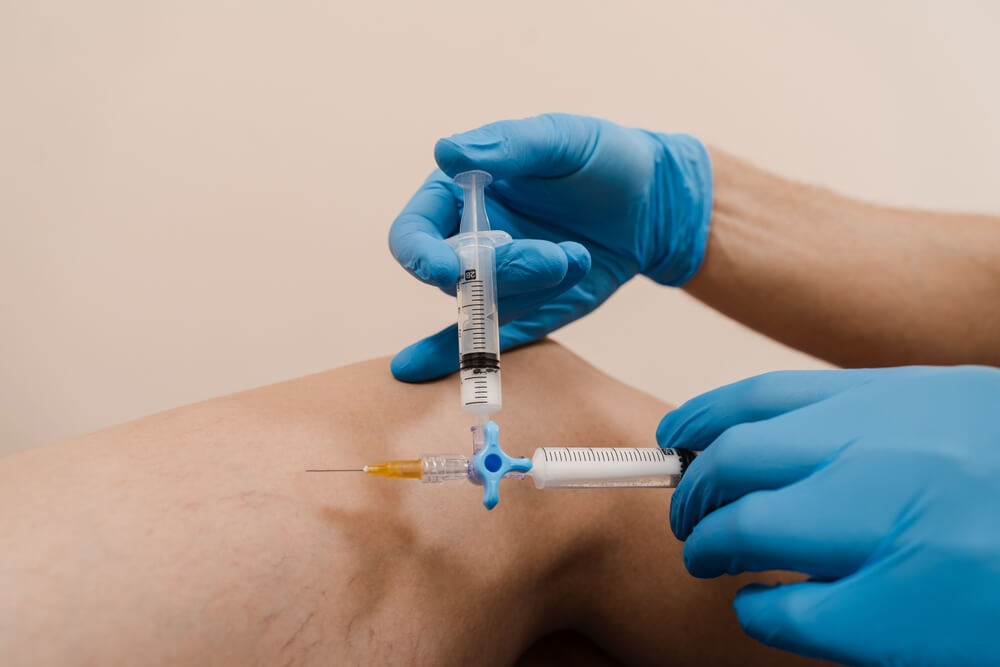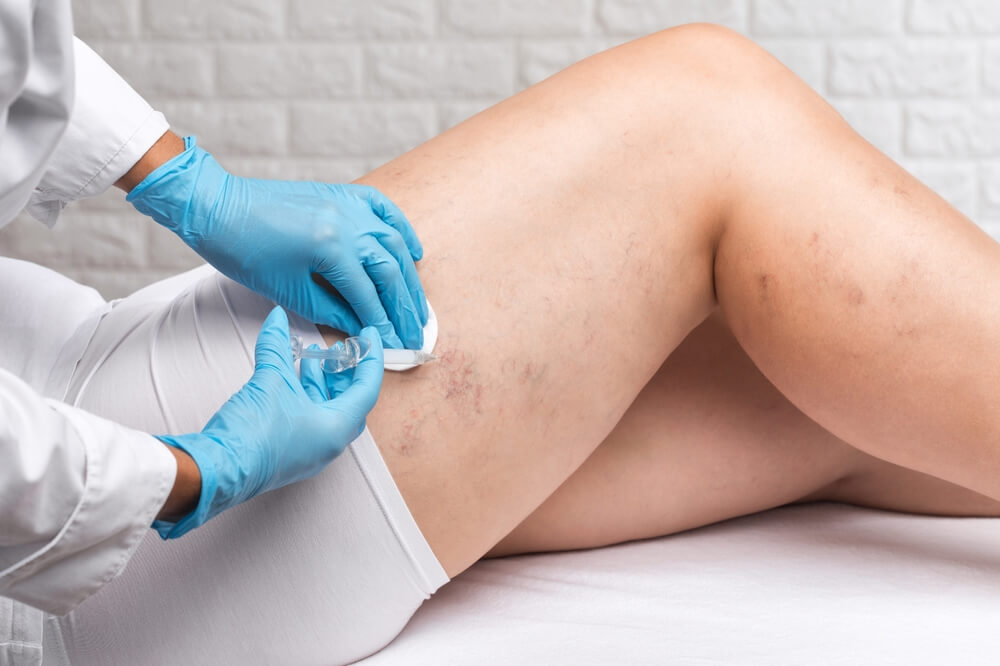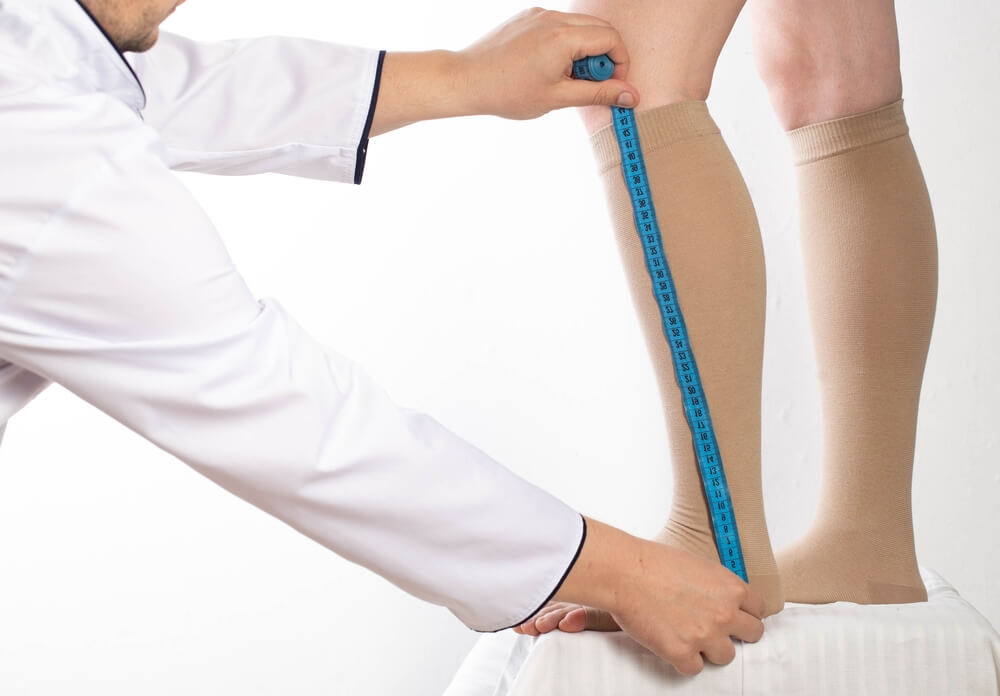Sclerotherapy

Living with varicose veins or spider veins can affect more than just appearance—it can cause aching, swelling, and even restless night cramps that interrupt your routine. If you’ve noticed visible small veins or clusters of blue and red lines under your skin, sclerotherapy may be the solution you’ve been looking for.
This minimally invasive treatment is one of the most effective ways to eliminate spider veins and small varicose veins, restoring smoother legs and improving circulation within the superficial venous system.
What Is Sclerotherapy?
Sclerotherapy is a minimally invasive procedure that targets spider veins, reticular veins, and varicose veins just beneath the skin. During the procedure, a very fine needle is used to inject a sclerosing solution into the affected veins. This chemical solution irritates the vein wall, causing it to swell shut and seal off the treated vessels.
As blood flow is naturally redirected to healthier veins, the treated veins gradually collapse and fade within a few weeks. Depending on the size and number of veins, you may need multiple treatments for the best results.
Most patients find the procedure quick, with minimal discomfort—typically described as a mild burning or stinging at the injection site.
Why You Might Need Sclerotherapy
Your provider may recommend sclerotherapy treatment if you have:
- Spider veins that are visible beneath the skin’s surface
- Small varicose veins that cause aching, burning, or heaviness
- Larger veins that have not responded to prior foam sclerotherapy or laser treatment
- Skin discoloration or swelling caused by poor circulation
- Discomfort, itching, or cramping along treated veins
Some people seek sclerotherapy to improve cosmetic appearance, while others do it to relieve related symptoms caused by venous disease or venous insufficiency.
Preparing for Sclerotherapy>
Before your procedure, a physical exam is performed to map the target veins and ensure the best approach for your treatment area. You’ll be asked about your medical conditions, including heart disease, a history of blood clots, or use of blood thinners, iron supplements, or herbal supplements, as these can affect the results.
To prepare, you should:
- Avoid anti-inflammatory medications like aspirin or ibuprofen 48 hours before and after your treatment.
- Refrain from using lotions or oils on your legs.
- Wear loose and comfortable clothing.
- Bring or plan to wear support hosiery or compression stockings after the procedure to aid healing and reduce swelling.
Your doctor may perform an ultrasound to check for deeper issues in the deep venous system or perforating veins before proceeding.
What Happens During Sclerotherapy
Before the Procedure

You’ll lie comfortably while the treatment area is cleaned. Your doctor will mark the injected veins for precision and may apply a local anesthetic.
During the Procedure
The vein specialist uses a very fine needle to inject a sclerosing agent—either a liquid or foam—into the injected veins. The solution directly irritates the vein wall, causing the vein to swell shut and block blood flow.
In foam sclerotherapy or ultrasound-guided sclerotherapy, the sclerosing solution is mixed with tiny air bubbles to create a foam that displaces blood and allows for better contact with the vein wall. This technique helps treat larger varicose veins, telangiectatic leg veins, and other vascular malformations with higher precision.
A pad is placed over each injection site, and your doctor gently massages the treated area to distribute the solution directly through the target veins. Each session typically lasts 30–45 minutes and is typically performed in-office.
After the Procedure

You can walk immediately after sclerotherapy, which helps prevent blood clots and supports healing.
For the best results:
- Wear compression stockings for 1–2 weeks to keep pressure on treated veins.
- Avoid sun exposure on the treated area for two weeks.
- Refrain from hot baths, saunas, or whirlpools for 48 hours.
- Return to normal activities the same day, but limit intense exercise for about a week.
Your provider may schedule a follow-up visit to assess healing and ensure successful treatment.
Results and Recovery
The appearance of treated veins improves within a few weeks, though larger varicose veins may take three to six weeks or longer. Treated veins tend to fade gradually and are replaced by healthier veins as circulation improves.
Minor side effects may include:
- Bruising or mild swelling at the injection site
- Temporary brown lines or spots that fade in a few months
- Slight itching or irritation along the treated vessels
Complications are rare, but can include mild inflammation, allergic reaction, or a small blood clot in the saphenous vein or small saphenous vein. If this occurs, contact your provider right away.
With proper care, most people return to their normal activities immediately after treatment, experiencing noticeable improvements in both comfort and cosmetic appearance.
Risks and Side Effects
While sclerotherapy is highly safe and effective, possible side effects can include:
- Allergic reaction to the sclerosing agent (rare)
- Visual disturbances, such as light flashes or mild headaches from tiny air bubbles
- Small sores or redness near the injection site
- Tenderness or firmness in larger veins after treatment
- Slight risk of blood clots or venous ulceration in rare cases
Following your provider’s instructions and wearing your compression stockings will help reduce these risks and promote smooth recovery.
When to Call Your Doctor
Seek medical advice if you experience:
- Severe pain or swelling in the treated area
- Red streaking or worsening warmth at an injection site
- Shortness of breath or chest pain (signs of a blood clot)
- Persistent irritation or infection that lasts more than a few weeks
Why Choose Nelson Vein Treatment Center?
At Nelson Vein Treatment Center, no one can take better care of you than we can. Dr. Dvora Nelson, a board-certified surgeon specializing in minimally invasive vein procedures, performs sclerotherapy techniques with precision, safety, and care.
Each patient receives an individualized treatment plan based on their vein health, symptoms, and lifestyle. We take time to explain every step of the process, review ultrasound results with you, and even welcome family members to be part of the conversation.
Ready to restore your confidence and relieve the discomfort of spider veins or varicose veins? Schedule your consultation today at Nelson Vein Treatment Center to discover how expert sclerotherapy treatment can help you achieve smoother, healthier legs—safely and effectively.

Schedule Your Consultation
To request a Sclerotherapy consultation, fill out the form below or call us at 440-617-6061.
